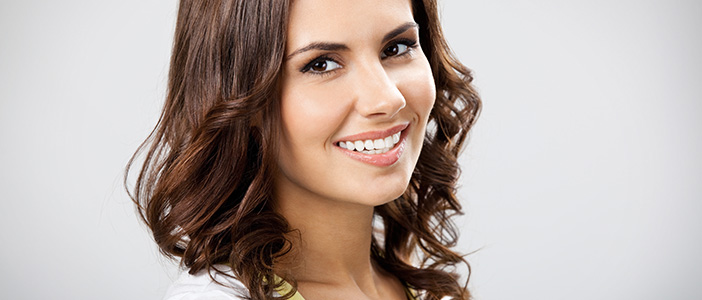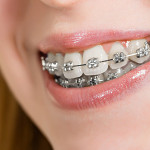Dental Health With Crooked Teeth and Misaligned Bites
Article Featured on WebMD
There are several reasons why some people’s teeth grow in crooked, overlapping, or twisted. Some people’s mouths are too small for their teeth, which crowds the teeth and causes them to shift. In other cases, a person’s upper and lower jaws aren’t the same size or are malformed, resulting in either an overbite, when there is excessive protrusion of the upper jaw, or an under bite, when the lower jaw protrudes forward causing the lower jaw and teeth to extend out beyond the upper teeth.
Most often crooked teeth, overbites, and underbites are inherited traits just as the color of your eyes or size of your hands. Other causes of misaligned bites are early loss of baby or adult teeth; improper fit of dental restorations (for example, fillings or crowns); gingivitis (gum disease); undue pressure on the teeth and gums; misalignment of the jaw after an injury; tumors of the mouth or jaw; or common oral health problems in children such as thumb sucking, tongue thrusting, pacifier use beyond the age of three, or prolonged use of a bottle.
What Problems Come With Crooked Teeth and Misaligned Bites?
Crooked teeth and misaligned bites can:
- Interfere with proper chewing.
- Make keeping teeth clean more of a challenge, increasing the risk of tooth decay, cavities, and gingivitis.
- Strain the teeth, jaws, and muscles, increasing the risk of breaking a tooth.
- Make people feel self-conscious about their appearance and affect their self-esteem.
How Do I Know if My Teeth Are Crooked or My Bite Is Misaligned?
While you can see for yourself if teeth are crooked, your dentist can determine if the problem warrants treatment. Your dentist will look for the following signs:
- Abnormal alignment of teeth
- Abnormal appearance of the face
- Difficulty or discomfort when chewing or biting
- Speech difficulties, including a lisp
Your dentist will usually refer you to an orthodontist — a dentist who specializes in the diagnosis and treatment of crooked teeth and misaligned jaws.
What Tests Can I Expect at the Orthodontist?
The orthodontist will likely take X-rays, photographs of your face, and teeth impressions to determine if and what type of treatment is needed. X-rays provide information on the position of your teeth and roots and if any teeth have yet to come through the gums. Special cephalometrics or panoramic X-rays show the relationship of the teeth to the jaws and the jaws to the head. Your orthodontist may also want to take regular photographs of your face to further examine the relationship between the teeth, jaws, and head. Finally, impressions may be made of your teeth. This is done by having you bite down on a soft material that is later used to create an exact copy of your teeth.
How Are Crooked Teeth and Misaligned Bites Treated?
Once a diagnosis is made, your orthodontist can decide the best treatment for your teeth or misaligned bite. For some people, a removable retainer (to stabilize the new position of teeth) will be all that’s needed to correct the problem. Removal of one or more teeth may be required if overcrowding is the main problem. For most people, braces are necessary to correct the problem. In rare and extreme cases, such as an extreme overbite or underbite, an operation may be necessary.
Looking for an orthodontist in Beaverton, Oregon? Biermann Orthodontics is a cutting-edge orthodontic practice that serves Beaverton and Molalla, OR, and focuses on providing world-class customer service and efficient treatment. We strive to create stunning smiles in the shortest amount of time without ever sacrificing quality.
Visit our Locations page to find a clinic near you, or schedule an initial consultation.
Biermann Orthodontics
503-690-0722
17885 NW Evergreen Parkway, Suite 200
Beaverton, OR 97006



